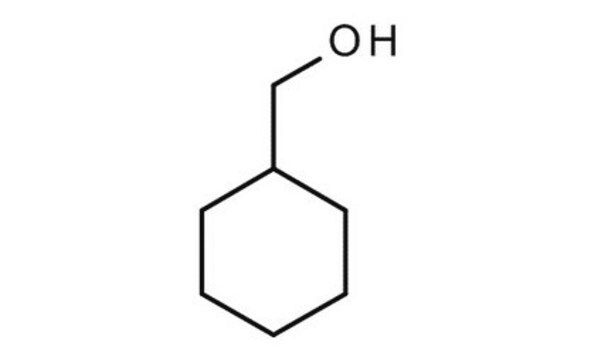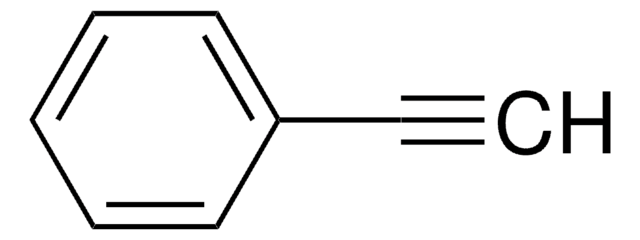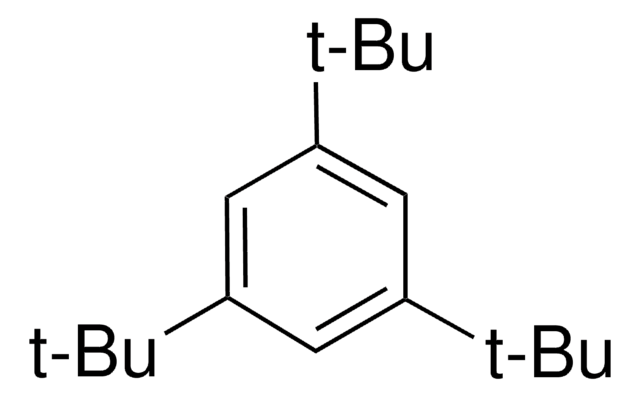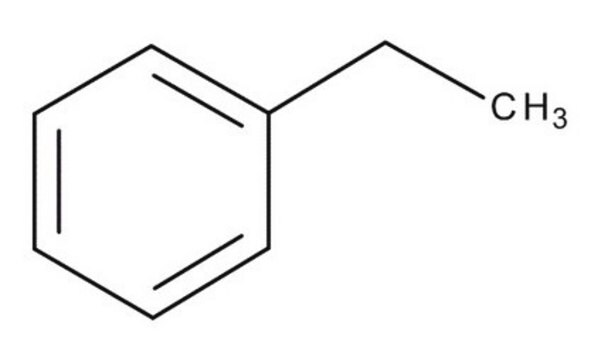D79403
Bicyclohexyl
99%
Sinónimos:
1,1′-Bi(cyclohexyl), BCH, Dicyclohexyl
About This Item
Productos recomendados
Nivel de calidad
Análisis
99%
formulario
liquid
temp. de autoignición
473 °F
índice de refracción
n20/D 1.478 (lit.)
bp
227 °C (lit.)
mp
3-4 °C (lit.)
densidad
0.864 g/mL at 25 °C (lit.)
cadena SMILES
C1CCC(CC1)C2CCCCC2
InChI
1S/C12H22/c1-3-7-11(8-4-1)12-9-5-2-6-10-12/h11-12H,1-10H2
Clave InChI
WVIIMZNLDWSIRH-UHFFFAOYSA-N
Información sobre el gen
human ... CYP1A2(1544) , ESR1(2099)
¿Está buscando productos similares? Visita Guía de comparación de productos
Categorías relacionadas
Aplicación
- To synthesize 1-azido-1,1′-bi(cyclohexane) by Mn-catalyzed oxidative azidation method using nucleophilic NaN3 as an azide source.
- To prepare 1-fluoro-1,1′-bicyclohexyl using elemental fluorine.
- In the aliphatic Friedel-Crafts reaction to prepare novel bicyclohexyl based oxygenated building block via C-H activation with aluminum trichloride and acetyl chloride.
Palabra de señalización
Danger
Frases de peligro
Consejos de prudencia
Clasificaciones de peligro
Acute Tox. 4 Oral - Aquatic Acute 1 - Aquatic Chronic 2 - Asp. Tox. 1 - STOT SE 3
Órganos de actuación
Respiratory system
Código de clase de almacenamiento
10 - Combustible liquids
Clase de riesgo para el agua (WGK)
WGK 3
Punto de inflamabilidad (°F)
197.6 °F - closed cup
Punto de inflamabilidad (°C)
92 °C - closed cup
Equipo de protección personal
Eyeshields, Gloves, multi-purpose combination respirator cartridge (US)
Elija entre una de las versiones más recientes:
¿Ya tiene este producto?
Encuentre la documentación para los productos que ha comprado recientemente en la Biblioteca de documentos.
Los clientes también vieron
Nuestro equipo de científicos tiene experiencia en todas las áreas de investigación: Ciencias de la vida, Ciencia de los materiales, Síntesis química, Cromatografía, Analítica y muchas otras.
Póngase en contacto con el Servicio técnico











